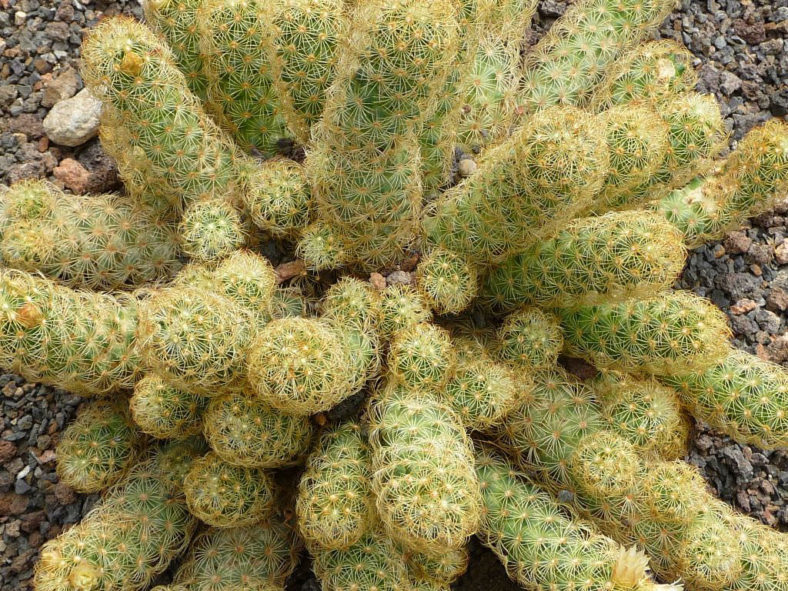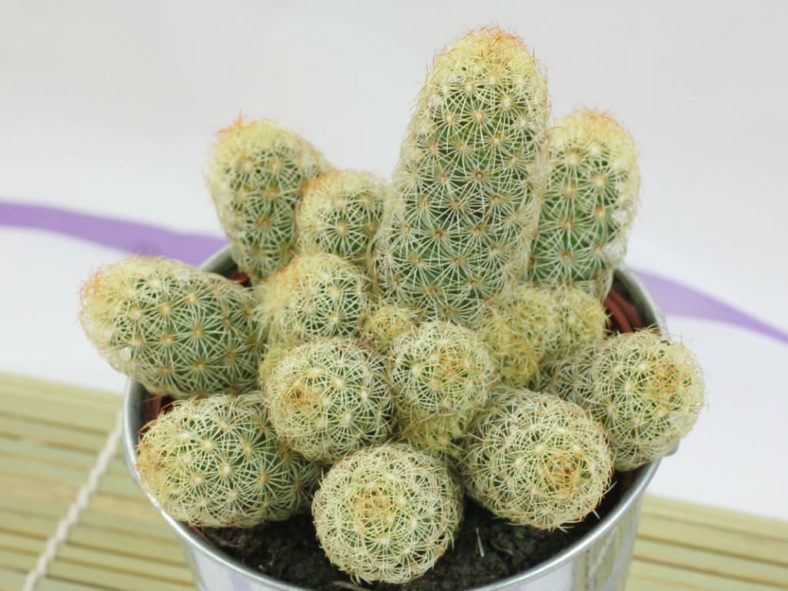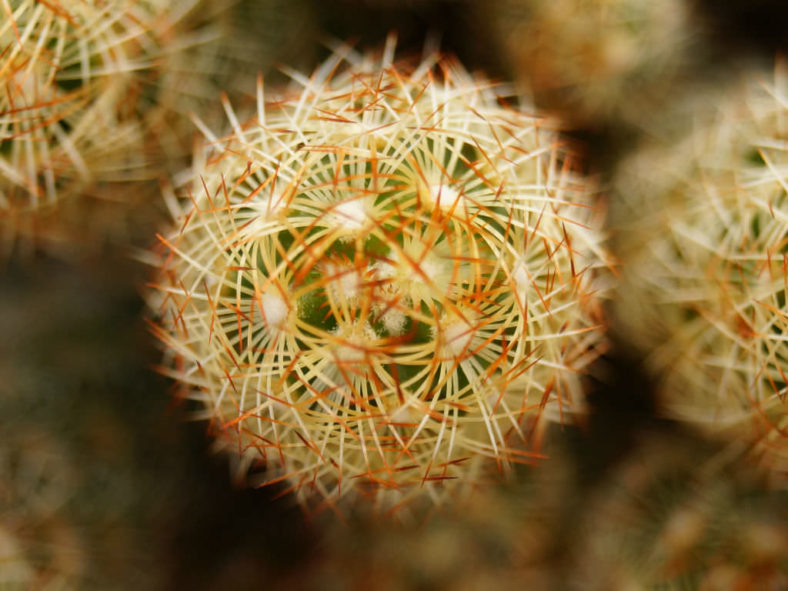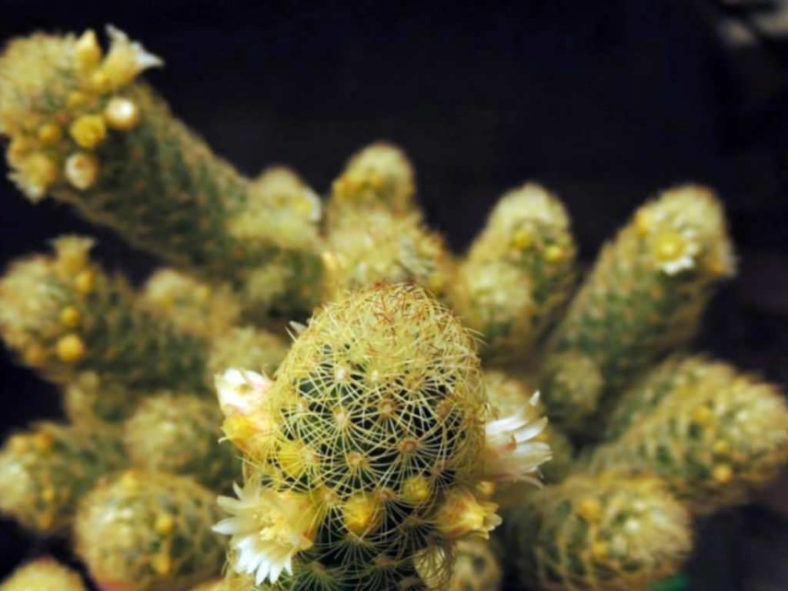Scientific Name
Mammillaria elongata DC.
Common Name(s)
Golden Stars, Gold Lace Cactus, Ladyfinger Cactus, Lady Fingers
Synonym(s)
Mammillaria elongata subsp. elongata, Chilita elongata, Leptocladia elongata, Leptocladodia elongata, Mammillaria densa, Mammillaria echinata var. densa, Neomammillaria elongata
Scientific Classification
Family: Cactaceae
Subfamily: Cactoideae
Tribe: Cacteae
Subtribe: Cactinae
Genus: Mammillaria
Origin
Mammillaria elongata is native to central Mexico.
Description
Mammillaria elongata is a small cactus that forms dense clusters of bright green, cylindrical stems with short, conical tubercles ending in round, woolly areoles that bear clusters of yellow to golden yellow spines. The stems are erect to semi-prostrate and can grow up to 6 inches (15 cm) long and 1.2 inches (3 cm) in diameter. The spines, which are variable in number, between 14 and 25, are more or less recurved, and can measure up to 0.6 inches (1.5 cm) long.
The flowers are whitish, pale yellow, or pinkish, sometimes flushed pink or with pink mid-stripes. They can reach a diameter of 0.4 inches (1 cm) and appear on the upper part of the stems in spring.

Hardiness
USDA hardiness zones 9b to 11b: from 25 °F (−3.9 °C) to 50 °F (+10 °C).
How to Grow and Care
To encourage better flowering, allow the plants to enjoy a cooling period in the winter and suspend watering. Unlike many other cacti, which use their ribs as storage devices, Mammillaria features raised tubercles from which spines emerge. When you water, the tubercles will expand to increase water storage. The flowers emerge from the axils of these tubercles on the previous year's growth, which accounts for their interesting halo effect. The cactus mustn't be exposed to prolonged dampness and standing water. Never let your cactus sit in a dish of water. Lastly, fertilize during the growing season for the best results.
Repot as needed, preferably during the warm season. To repot Mammillaria, ensure the soil is dry before repotting, then gently remove the pot. Knock away the old soil from the roots, removing any rotted or dead roots. Treat any cuts with a fungicide. Place the plant in its new pot and backfill it with potting soil, spreading the roots as you repot. Leave the plant dry for a week or so, then water lightly to reduce the risk of root rot.
See more at How to Grow and Care for Mammillaria.
Forms
Links
- Back to genus Mammillaria
- Succupedia: Browse succulents by Scientific Name, Common Name, Genus, Family, USDA Hardiness Zone, Origin, or cacti by Genus
Photo Gallery
Click on a photo to see a larger version.


